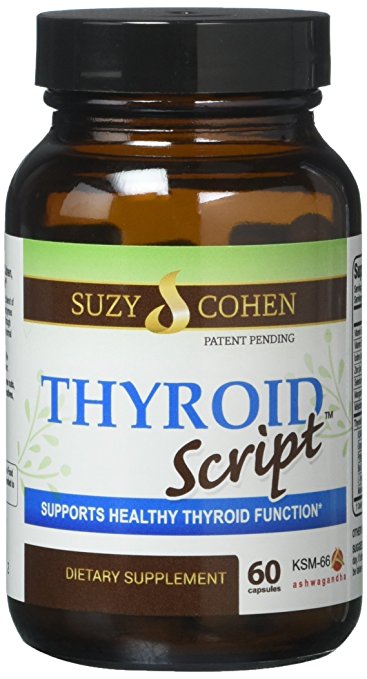
Louise O’Connor, Contributor
Thyroid Nation
What Sets Off Excess Reverse T3 (RT3)?
If you are experiencing the typical symptoms of a low thyroid but your standard thyroid blood tests appear to be normal you may want to take a closer look at reverse T3.
What exactly is Reverse T3?
Reverse T3 is an inactive form of T3. In fact, it has the complete opposite effects of
T3, the most biologically active thyroid hormone.
T3 is a powerful thyroid hormone that travels throughout your body to help rev up all metabolic processes.
In fact, adequate circulating free T3 can overcome many of the indicators of a low thyroid.
Your body requires a balance of both free T3 and reverse T3…
It’s worth noting reverse T3 is not all bad, as it plays a role in regulating your
metabolic rate.
Reverse T3 is useful to help slow your metabolism so your body can keep humming along at a steady pace. After all, you don’t want your metabolic rate revving too quickly. Too fast and you end up with symptoms of hyperthyroidism.
However, what happens when your body creates an abnormal amount of reverse T3?
The symptoms of excess reverse T3
An overload of reverse T3 slows your metabolism to a crawl as reverse T3 blocks T3
uptake. In essence, excess reverse T3 pushes your body into a hypothyroid state.When abnormal amounts of reverse T3 are produced it triggers symptoms normally associated with hypothyroidism.
The symptoms include:
-
ongoing fatigue
-
a depressed mood
-
thyroid hair loss
-
muscle weakness
-
low blood pressure
-
a slower than normal pulse rate
Here is some basic biochemistry to explain how rT3 is created
T4 is the main hormone produced within the thyroid. While T4 does have some
effects, it’s considered the ‘storage’ thyroid hormone. Your T4 is readily available
to be converted through to either active T3, or reverse T3.
In a healthy person, the body keeps a close check of what it needs and produces adequate amounts of both. Generally, only small amounts of rT3 are required. However, when too much T4 is switched from T3 to reverse T3, your circulating rT3 skyrockets.
T4 conversion to rT3 is termed the ‘inactivating pathway’.
So the big question is, WHY does the body produce excess reverse T3? What causes the imbalance? Here is a list of the six major factors that I’ve identified over the years. Could one or more apply to you?
1) Unrelenting physical and emotional stress
Any type of severe stress will spark a rise in rT3.
The reason is related to cortisol, your fight or flight hormone. This is the hormone that plays a critical role in helping you cope in stressful situations.
It’s a normal biological response for cortisol to soar in response to any type of physical or emotional stress.
There is a flip side to having enormous amounts of cortisol surging in your bloodstream. Too much, for too long will inhibit normal thyroid hormone activity.
In a nutshell, stress shifts the conversion of T4 to reverse T3. Over time, it can become a predictable, hard-wired response within your body.
Health experts propose reverse T3 is produced as a protective response to conserve energy during times of prolonged stress. Your body cannot survive on hyper-alert for too long, as it would result in burnout. Reverse T3 becomes a useful tool to slow you down.
2) Systemic illness is a factor
If you have low T3 you should get your reverse T3 checked, especially if you have some type of long-standing illness.
Liver disease, kidney disease, chronic infections, and autoimmune disorders are often associated with high reverse T3. Researchers propose it is an adaption to chronic illness.
On testing, it’s typical to see low T3 and high reverse T3.
It’s very difficult to recover from immense alterations to the ratio of free T3 to
reverse T3 if an underlying chronic illness is not properly addressed. Treating
excess reverse T3 secondary to a specific chronic illness is best discussed with a
skilled healthcare practitioner.
3) Extreme, or yo-yo dieting
Did you know cutting calories actually slows your thyroid? It’s the body’s natural
response to conserve energy expenditure when you are in a ‘famine’ situation.
When calorie intake is low, the body is forced to put the brakes on the metabolic rate to conserve energy. The easiest and quickest way to do this is to slow production of T3 and ramp up production of reverse T3.
This scenario applies to anyone who goes on a strict calorie-controlled diet, regardless if they have a thyroid problem. Obviously this is the last thing you want! A diet-induced increase in reverse T3 will make your low T3 issue even more of a problem.
4) Low iron is leaving you tired and breathless
Chronic iron deficiency is a common finding in hypothyroidism. This deficiency
needs to be addressed as a lack of iron weakens proper thyroid hormone metabolism.
More specifically, low iron decreases optimal conversion T4 to T3.
Iron is also fundamental in fighting fatigue. It’s incorporated within red blood cells to help carry oxygen around your body. When iron is low, your oxygen levels are diminished and your body cannot utilize T3 at a cellular level.
A test of ferritin will assess your stored iron, which is a more reliable indicator of your iron status.
5) Low zinc and selenium is blocking healthy conversion of T4 to T3
Zinc and selenium aid many important biochemical pathways. Most importantly, these two nutrients are vital to support the ongoing conversion of T4 to T3. This is why these two minerals are often added to thyroid health supplements.
A deficiency of zinc and selenium can lead to reduced peripheral conversion of T4 to T3.
There are two other factors to consider. Ageing and certain drugs are also associated with increased conversion of T4 to reverse T3.
6) Long term exposure to toxins
It’s well established consistent exposure to a range of environmental toxins can take a serious toll on your thyroid health. Heavy metals, pesticides, and industrial chemicals are the biggest threat.
Deep at a cellular level, toxins block the thyroid hormone receptors. This means the thyroid hormones cannot attach and do their job within the cell. Toxins can also enter the thyroid causing damage to the actual thyroid tissue. Over time, this sabotages day to day function of your thyroid. The stress of dealing with toxins and diminishing function of the thyroid can activate far greater production of reverse T3.
How can you check reverse T3? What test should you discuss with your healthcare practitioner?
Many integrative doctors and Naturopaths now consider the reverse T3 test to be an important thyroid blood test to effectively diagnose and manage hypothyroidism.
The reverse T3 test is the only way to measure excess concentrations of reverse T3. Failure to specifically screen for reverse T3 could result in you getting a less than accurate assessment of your thyroid health. It’s a test that should be included in your list of important thyroid blood tests you need to discuss with your healthcare practitioner.
About the Author
Louise O’Connor is a leading Australian Naturopath + Wellness Coach who graduated from the Endeavour College of Natural Health, Brisbane Australia in 1995. She is a registered Naturopath with the Australian Traditional Medicine Society (ATMS), the peak association of natural medicine practitioners in Australia. She educates and writes on thyroid health. Louise embraces a holistic approach to thyroid health and advocates seeking out and treating the underlying causes, rather than just addressing the symptoms. Louise is the author of the top-selling e-Book: The Natural Thyroid Diet. The 4-Week Plan To Living Well, Living Vibrantly. Be sure to follow her on Facebook and Twitter.
Questions or anything to add about the 6 factors for reverse T3? We want your thoughts in the comments section–Please!






Please send me any information that you may have on thyroid and adrenal’s as I do have adrenal issues and beginning to have thyroid issues !
Hi Lynda,
Thanks for your comment. I am attaching a few good articles, for your review. Also, the site has lots of wonderful resources to check out, including the symptoms, page: https://thyroidnation.com/symptoms-causes/ as well as the Important Blood Tests page: https://thyroidnation.com/important-blood-tests/. Hope these help. 🙂 ~Danna
https://thyroidnation.com/hypothyroidism-hyperthyroidism/
https://thyroidnation.com/fight-or-flight-rescuing-yourself-from-adrenal-fatigue/
I’m an example of long term exposure to toxins!
Yes, I do have RT3, but it was not apparent at first why I have it. A Functional Medicine Nurse Practitioner I met in 2014 was the first person to ever test Rt3 for me. Because I thought my mercury fillings might be affecting my thyroid I asked her about heavy metals testing. The testing showed some mercury…and over three times as much lead as normal! I’m in the process of chelating the lead. I expect my RT3 to go down eventually. I think my thyroid has been struggling for decades and the lead exposure may be from childhood. It does help that I am taking a T4/T3 medication called NatureThroid and just lately the NP added a very small amount of additional T3.
Have you seen any link with breast implants and thyroid disease?